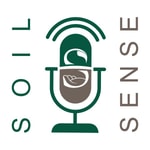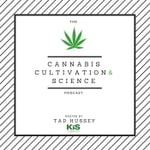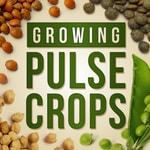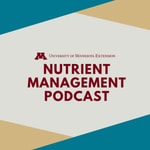Soil Sense – Details, episodes & analysis
Podcast details
Technical and general information from the podcast's RSS feed.

Soil Sense
Tim Hammerich and Abbey Wick, Ph.D.
Frequency: 1 episode/15d. Total Eps: 148

Recent rankings
Latest chart positions across Apple Podcasts and Spotify rankings.
Apple Podcasts
🇨🇦 Canada - naturalSciences
30/07/2025#66🇨🇦 Canada - naturalSciences
29/07/2025#55🇨🇦 Canada - naturalSciences
28/07/2025#42🇨🇦 Canada - naturalSciences
27/07/2025#30🇺🇸 USA - naturalSciences
27/07/2025#99🇨🇦 Canada - naturalSciences
26/07/2025#66🇨🇦 Canada - naturalSciences
25/07/2025#50🇨🇦 Canada - naturalSciences
24/07/2025#34🇺🇸 USA - naturalSciences
15/07/2025#90🇺🇸 USA - naturalSciences
18/06/2025#95
Spotify
No recent rankings available
Shared links between episodes and podcasts
Links found in episode descriptions and other podcasts that share them.
See all- http://www.futureofag.com/
138 shares
- http://www.ndsoilsense.com/
99 shares
- https://www.growingpulsecrops.com/
67 shares
RSS feed quality and score
Technical evaluation of the podcast's RSS feed quality and structure.
See allScore global : 43%
Publication history
Monthly episode publishing history over the past years.
The Art of the Possible With Jeff Rowe and Matt Wallenstein
Season 8 · Episode 1
lundi 7 avril 2025 • Duration 40:26
Introducing: season eight of Soil Sense! Co-hosts Tim Hammerich and Dr. Abbey Wick are excited to bring another season to the show, this time sponsored by Syngenta. Season eight explores soil health at scale, featuring farmers from all around the world.
Science and innovation have unlocked incredible gains in agricultural productivity and sustainability over the years. But there's still so much potential out there, especially if we're able to leverage a better understanding of soil science. We're joined today by Syngenta CEO, Jeff Rowe, and chief soil scientist, Dr. Matt Wallenstein. They challenge us consider the art of the possible when it comes to the future of soil health.
“ For most farmers, a lot of farmers in the world, the land is their most important investment. And in some ways, historically, it's been what we understood the least.” - Jeff Rowe
Jeff Rowe is the CEO of Syngenta group based in Basel, Switzerland. But the other hat he wears is that of a family farmer. These two vantage points, as an agribusiness CEO and a farmer, make him an excellent guest to kick off this season.
“ Because we hadn't given as much attention to the soil, that now represents the biggest opportunity we have to increase productivity and sustainability in the next decade.” Matt Wallenstein, Ph.D.
Dr. Matt Wallenstein joined Syngenta with a background in research at Colorado State, and as an entrepreneur. He launched a startup to commercialize some of this research. He was recruited by Jeff to lead the company's soil health efforts.
Jeff and Matt discuss the potential for soil health to advance agricultural productivity and sustainability.
This Week on Soil Sense:
Meet farmer and Syngenta CEO Jeff Rowe and chief soil scientist Dr. Matt Wallenstein
Explore how scientific advancements in soil science can lead to opportunities for farmers
Consider the importance of resilient soil, the balance of traditional and modern farming methods, and Syngenta's commitment to supporting soil health globally
Thank you to Syngenta for sponsoring this season of the Soil Sense podcast. If you are interested in what soil health looks like in practice and on the farm, please subscribe and follow this show on your favorite podcast app, and leave us a rating and review while you’re there!
Building Soil Health for Soil Function
Season 7 · Episode 24
vendredi 29 septembre 2023 • Duration 36:28
In this episode we wrap up season seven of the soil sense podcast with a well known and well respected farmer and long-time soil conservationist, Barry Fisher. Barry recently retired from his career at the USDA, where he most recently worked in the soil health division. In that capacity he met and spoke with farmers about soil health throughout the central part of the US. Since retirement, Barry manages his family farm in Greencastle, Indiana and has a consulting business where he does training and soil health education for organizations through Fisher Soil Health LLC. Barry discusses soil health principles, important considerations for transition to regenerative practices, and the essential role of a knowledgeable advisor.
“If you really think about it, our current crops are only feeding the biology June, July, a little bit of May, and maybe a little bit of August. That's a very small percent of the total year… We did a lot of talking about no till as far as protecting erosion, but when we added cover crops to it, that was a game changer in that now the cover crop immediately fed more biology longer. That biology immediately started providing aggregate stability which absolutely helps the surface infiltration of soil, the aeration of soil. You know you start getting better structure to the surface of the soil and that can happen in as little as one season when we add cover crops.” - Barry Fisher
One visual Barry has used to help demonstrate soil health to producers is what he has called the “fence row effect.” Previous fence rows can illustrate the value and yield potential when incorporating the four principles of soil health. There is a reduction in disturbance, added diversity of plant life, maintained living roots in the soil and because of that the soil is kept covered. These four principles can allow producers to see a bump in yield in these areas. Barry goes on to explain how to generalize some of those principles on an operation-wide basis.
“Generally there's some farmer in the front row that says, “Okay Fisher, that's great, but, my landlord wants me to farm the whole farm, not just the old fence rows.”... I can show those aerial photos where management on one farm had the four principles kind of in place and the management on the farm right next to it did not. And the aerial photo is very telling that yes, we can manage beyond the fence row. We can get that fence row effect across the entire farm.” - Barry Fisher
This Week on Soil Sense:
Meet Barry Fisher a current Indiana farmer and retired USDA soil conservationist
Explore what Barry calls the “fence row effect” and how that can be applied to demonstrating the four principles of soil health
Discover Barry’s recommendations in transitioning tillage and cover crop practices
Thank you to the Soy Checkoff for sponsoring this Farmers for Soil Health series of the Soil Sense podcast. This show is produced by Dr. Abbey Wick, Dr. Olivia Caillouet, and Tim Hammerich, with support from the United Soybean Board, the University of Missouri Center for Regenerative Agriculture and the Soil Health Institute.
If you are interested in what soil health looks like in practice and on the farm, please subscribe and follow this show on your favorite podcast app, and leave us a rating and review while you’re there. Check out the Farmers for Soil Health website at FarmersForSoilHealth.com.
Bio Strip-Till with Donn Branton
Season 7 · Episode 14
jeudi 28 septembre 2023 • Duration 31:55
One of the valuable aspects of this series is that it has given us a chance to talk to farmers at all different stages of their soil health journey. It’s particularly inspiring to talk to someone who has been at this a long time and is really seeing the benefits of some of these practices. New York farmer Donn Branton discusses how decades of experimenting and learning has led him to develop his system of growing no-till non-GMO corn and soybeans with practices like cover crops and bio strip-till in Western New York.
“The water infiltration, the earthworm activity, those are the biggest things. Drove around with one of the soil water technicians one winter day and I said, you see that brown snowbank there? Yeah. Drive up the road a little further next to our field. What color is that one? It's white. What's going on? I said, it's wind erosion. You know, some things like that are so obvious when you're keen to it.” - Donn Branton
Don has a really interesting story that led him into farming on his own in 1979. Since that time he’s often been ahead of the curve with everything from reducing tillage to adding cover crops to embracing variable rate technology to planting corn into biostrips.
“One of the biggest things when we first started doing reduced till, heavy rainfall come through. Neighbors would have standing water, we wouldn't. Okay, what's going on? Well, we got water infiltration and had earthworm middens.” - Donn Branton
This Week on Soil Sense:
Meet New York farmer Donn Branton and discover his long term efforts towards soil health on his operation
Explore Donn’s different soil health practices, the many benefits he’s observed and the additional revenue he’s enjoyed
Thank you to the Soy Checkoff for sponsoring this Farmers for Soil Health series of the Soil Sense podcast. This show is produced by Dr. Abbey Wick, Dr. Olivia Caillouet, and Tim Hammerich, with support from the United Soybean Board, the University of Missouri Center for Regenerative Agriculture and the Soil Health Institute.
If you are interested in what soil health looks like in practice and on the farm, please subscribe and follow this show on your favorite podcast app, and leave us a rating and review while you’re there. Check out the Farmers for Soil Health website at FarmersForSoilHealth.com.
Field Check: Infiltration During Intense Rain Events
lundi 17 août 2020 • Duration 10:22
“We’ve been having significant rain events the last couple of years. 2 inches, 3 inches, 5 inches at a time. And I’m just curious, what can I do in my soil health program to ensure that the soil keeps as much rainfall as possible? I hate to see soil leaving my fields after working so hard in no till and cover crops to keep it in place.” - Bill Spiegel, Kansas Farmer and Successful Farming Magazine Editor
Dr. Aaron Daigh is an Associate Professor of Soil Physics and Hydrology at North Dakota State University in the Soil Science Department. His focus is studying how things move in the ground including water, chemicals, heat and the soil itself.
“When you get very heavy rainfall…..you can count on no matter what you’re doing out in the field that some portion of that is going to go to runoff because most soils just simply cannot take in that much water in that short of a period.” - Dr. Aaron Daigh
The water that is absorbed by the soil then adds value based on where it is stored. If it is stored shallow, in the first 6 inches, you can run into issues with “root rot, fungal diseases, wilting and drowning of that crop. “The portion of the water that goes deeper into the soil profile is ideal because you put water to where it can be stored for later for that crop when it’s needed.” Another added benefit to having water infiltrate deeper in the soil profile is keeping the soil stronger which will reduce future erosion and support equipment during harvest. Dr. Daigh suggests farmers make every attempt to not disrupt the soil anymore than necessary in order to increase its strength and contribute to water infiltration.
“Reducing the amount of disturbance that you have to that soil through aggressive tillage practices, helps get more water down these big macro pores that move water down deeper into the soil profile to be stored and prevent abundance of runoff and water erosion.” Dr. Aaron Daigh
Cover crops will also reduce disruption of soil by major rainfall which can be substantial. “The higher the residue rate, the slower that water’s going to move across and have a chance to infiltrate down into the soil and prevent what is running off from picking up speed as it goes down the landscape.”
Follow the link www.NDFieldCheck.com to participate in our next question and answer segment to share your questions and get them answered by the experts!
Connect with Soil Sense at Soil Sense Initiative
Soil Sense Podcast is hosted by Tim Hammerich of the Future of Agriculture Podcast.
Field Check: Managing the Complexities of Adding a New Crop
lundi 10 août 2020 • Duration 10:27
“How do farmers add more crops in their cropping rotation and manage the complexity of doing that in their farm operation?” - Jocelyn Velsestuk, Independent Agronomy Consultant for Western Ag, the President of the Saskatchewan Soil Conservation Association and a Director of The Saskatchewan Wheat Development Commission
Dr. David Ripplinger is an Associate Professor in the Department of Agribusiness and Applied Economics at North Dakota State University. He considers himself “an economist by training” but also a “systems thinker” and joins us to address Jocelyn's question.
“I would start with extension. Go and talking to folks like us to get some information.” - Dr. David Ripplinger
Dr. Ripplinger has some calculated budgets that can give possible projected yields and earnings for the farmer to understand what the outcome of a more complex operation may be. He asks farmers to consider the economics, the impact a new crop would have on your soil and how that may affect your input needs in future years. Finally, farmers need to also consider how to market a new crop to know what additional resources that may require. “You should never put a seed in the ground before you know what the likely home for that crop is.”
“There’s these agronomic trade offs, there’s these financial trade offs….understand the system as a whole which I think farmers generally do. Understand that change you’re making. Do some quick back of the envelope work and then decide how much do I need to really look at this to pull the trigger.” -Dr. David Ripplinger
Follow the link www.NDFieldCheck.com to participate in our next question and answer segment to share your questions and get them answered by the experts!
Connect with Soil Sense at Soil Sense Initiative
Soil Sense Podcast is hosted by Tim Hammerich of the Future of Agriculture Podcast.
Field Check: Getting Started with Cover Crops
lundi 3 août 2020 • Duration 10:14
“I’m getting the question about farmers wanting to plant a cover crop. But it's kind of a generic statement. So I think what they’re really asking is what do I plant and when do I plant? Where do I start? Where do we begin on this journey? ” - Jason Hanson, Consultant with Rock and Roll Agronomy
Dr. Abbey Wick is a Soil Health Extension Specialist at North Dakota State University. She offers some great advice for farmers wanting to venture into cover crops and the many benefits they offer.
“The simplest place to start is if you have a wheat in rotation, just let the volunteer grow and that’s your first cover crop. If you have some additional goals that you want to address, whether its compaction in a field or salinity. Say you dig a hole in your field and the soil aggregates or the structure looks like it could use a little help then adding in some different cover crops to that volunteer wheat might be a good solution.” - Dr. Abbey Wick
If you don’t have wheat in your rotation then Dr. Wick offers interseeding something like rye into corn. Interseeding practices may require different row spacing so farmers need to be aware of those potential changes. Soybeans present a different challenge as they produce a strong canopy that may make it difficult for a cover crop to get established. Dr. Wick recommends adjusting your timing and method of seeding to compensate for this obstacle.
Cover crops can help manage salinity issues where soybeans or corn may suffer. They can help provide structure and better trafficability to the field. Most farmers will start with one species of cover crop at a time but a cocktail of species can be used. Typically radish or rye can be used as first cover crops depending on what rotation that field has. There are pros and cons to each species and how they interact with what the next crop is. Dr Wick highlights that knowing the crop you are adding to your field, knowing the next crop in rotation to avoid any contraindicated cover crops and knowing your goals are the three critical things to consider when starting with cover crops.
“Cover crops don’t have to be fancy mixes and they don’t have to be really complex to work. And I think that’s what I want farmers to walk away with.” - Dr. Abbey Wick
Follow the link www.NDFieldCheck.com to participate in our next question and answer segment to share your questions and get them answered by the experts!
Connect with Soil Sense at Soil Sense Initiative
Soil Sense Podcast is hosted by Tim Hammerich of the Future of Agriculture Podcast.
Field Check: Hybrid Rye
lundi 27 juillet 2020 • Duration 10:10
“Hybrid small grain varieties seem to be gaining traction in some parts of Canada and the United States. What are the benefits and drawbacks of hybrid rye, wheat and barley varieties?” - Luke Struckman, Researcher and University Instructor based in Ottawa, Ontario, Canada.
Steve Zwinger is a Field Agronomist at the North Dakota State University Carrington Extension Center where he works with many cereal crops including hybrid varieties of rye.
“Some of these hybrids have been in in order to go over 200 or up to 200 bushels per acre range…..so the yield potential is there.” - Steve Zwinger
Steve continues with the hybrid rye advantages by explaining a shorter pollination window resulting in less ergot and a more uniform growth resulting in less lodge. With all of these advantages he does report a higher priced seed which depending on your market may not be worth the expense. At this time, Steve doesn’t know of too many farmers growing hybrid rye although seed production has begun.
There have been many attempts at producing a hybrid wheat. According to Steve “there are probably still people working on it, but there’s nothing commercially available.” Ultimately what was produced was not commercially viable enough to encourage ongoing research and development.
Follow the link www.NDFieldCheck.com to participate in our next question and answer segment to share your questions and get them answered by the experts!
Connect with Soil Sense at Soil Sense Initiative
Soil Sense Podcast is hosted by Tim Hammerich of the Future of Agriculture Podcast.
Field Check: Fertility for No Till Corn
lundi 20 juillet 2020 • Duration 09:58
“What is the best way to get all your fertility down in a no-till corn situation, especially your P and K?” - Kyle Geske, a Farmer from Enderlin, North Dakota
Dr. Dave Franzen, an Extension Soil Specialist at North Dakota State University, joins us to answer Kyle’s question. Dr. Franzen has extensive experience in both research and retail agronomy. You may recognize him from Season one of Soil Sense Episode Three and Episode Four.
“It is really important in the northern plains, specifically in North Dakota, to use a starter at planting time, at least for the phosphate.” - Dr. Dave Franzen
Dr. Franzen has seen some significant yield increase in no-till corn operations that have employed a starter phosphate application. He shares that the weather for planting for a no-till operation results in cooler temperatures for those farmers. The additional phosphate will help support plants in the face of those cooler temperatures and lead to dramatic yield increases. He also highlights the need for additional nitrogen for the first 6 years of transition from a conventional till to no-till operation. There are 14 essential nutrients that the plants need, 10 of which we have effective testing for. Nitrate testing is probably the most valuable and most significant of all the values evaluated. He does caution any producer that is testing for Potassium. Potassium values change dramatically depending on the season so consistent testing at the same time every year is critical for evaluating potassium trends in the soil.
“And then the Sulfur Soil test. I know sometimes you get it as part of a soil test suite but it’s a horrible test and people shouldn’t even pay attention to it.” - Dr Dave Franzen
Follow the link www.NDFieldCheck.com to participate in our next question and answer segment to share your questions and get them answered by the experts!
Connect with Soil Sense at Soil Sense Initiative
Soil Sense Podcast is hosted by Tim Hammerich of the Future of Agriculture Podcast.
Field Check: The Tradeoffs of Planting Green
lundi 13 juillet 2020 • Duration 10:16
“I like seeding soybeans green into growing winter rye for a variety of reasons. I think trafficability and weed control are much better with 40 or 50 pounds of rye growing in the field. The tradeoff is that the rye and the existing stubble keep the ground colder and wetter in some years, so the soybeans have a hard time getting going. My question is, is there any way to have warmer drier ground in the spring and reap the other benefits of planting green?” - Nathan Neameyer, Farmer from Rolla, ND.
Dr. Lee Briese joins us to help answer Nathan’s question. Lee is a Crop Consultant covering Stutsman and Barnes Counties for Centrol Crop Consulting. Lee has been scouting fields and providing recommendations to farmers in North Dakota for over 20 years. Lee was featured in episode six of season one of Soil Sense.
Lee emphasizes that planting soybeans green into cereal rye does involve tradeoffs.
“It’s actually protecting the soil, reducing evaporation, and slowing down the heating of it, and that is a concern for him early season. But the rye is also doing the same thing to the weeds. It’s giving you weed control. It’s protecting your soil moisture loss. So it’s helping you with your seed bed and emergence. I think it’s one of those things at this point, I’m not sure we can have both.” - Dr. Lee Briese
Lee says there are things that can be done to optimize the benefits of the cereal rye without slowing down the soybeans as much early on, such as reducing the planted population of rye or a wider row spacing. He also cautions to make sure that the concern is not just a matter of perception.
“We know that soybean tolerates a lot of difficulty, especially early in the season....so the appearance of the soybeans early on is not necessarily a critical factor. We do know that early planted soybeans - early flowering soybeans - have a better chance at having higher yields. But for much of North Dakota, the yield is fairly directly correlated to ‘when do we get rain during flowering?’.” - Dr. Lee Briese
Lee also recommends that farmers check their soil temps well into the season when evaluating the tradeoffs of planting green into cereal rye.
Follow the link www.NDFieldCheck.com to participate in our next question and answer segment to share your questions and get them answered by the experts!
Connect with Soil Sense at Soil Sense Initiative
Soil Sense Podcast is hosted by Tim Hammerich of the Future of Agriculture Podcast.
Field Check: How to Revive Nutrient-Depleted Forage Ground
lundi 6 juillet 2020 • Duration 10:07
“Recently I bought a piece of land that most of it has been hay land for generations. So there’s been a lot of nutrients exported and I’ve been trying to intentionally replace nutrients. I was just wondering what kind of a cover crop strategy would you employ on something like that given the season, particularly for fall grazing? When would you sow? What would you sow? What kind of mixes? How much per acre? Mainly to be harvested as standing stockpile by cows and some sheep. How would you approach this piece of land that’s mostly 85% to 90% crested wheat at this point? What kind of cover crops would you introduce and why?” - Clay Conry, Host of Working Cows Podcast
Dr. Kevin Sedivec joins us to help answer Clay’s question. Dr. Sedivec is the Extension Rangeland Management Specialist at North Dakota State University Extension and Director of the Central Grasslands Research Extension Center. You may remember him from Episode 006 of Soil Sense Season 2.
Dr. Sedivec shares that this is a common obstacle faced by producers. In trying to rejuvenate pastures for grazing, producers are asking annuals to compete with long established perennials. The perennial plants will take up water and will have contributed to a nitrogen deficient soil. Typically these long established perennials are exotic in origin and therefore do not have a natural symbiosis established with the environment.
“So you’re asking a grass to do something in that soil that it doesn’t naturally do because it’s not native. It becomes deficient of fertility is what’s really driving this. So we’re trying to bring something in to enhance that soil microbial population....the most common (legume) used is alfalfa.” - Dr. Kevin Sedivec
Unfortunately the long term fix for deficient soils takes more than one season. Dr. Sedivec recommends beginning with a legume mix to start the process. There are regional variations with which legume mix will be most successful and Dr. Sedivec recommends contacting your local NRCS or extension agent to find what suits your situation best. In Clay’s case he recommends using a yellow blossom alfalfa at 10 pounds per acre and either seeding in the fall or early spring.
“That will give them a long term fix of a legume with his grass. We’re putting exotics and exotics but it at least will help him, one, in terms of production and, two, it will help him in terms of soil fertility and soil microbial activity to kind of get that soil back into a healthy state.” - Dr. Kevin Sedivec
Ideally we would like to add more species to the mix but according to Dr. Sedivec “that’s probably the best we can do to enhance (Clay’s) production and quality in those soils in that stand.” Adding nitrogen can also help with helping to build the soils. An additive, such as urea, will not last long term but will provide benefit for the new crops planted as you build your soil. Strategies can be adjusted for more long term management including cover crops as the soils change.
Follow the link www.NDFieldCheck.com to participate in our next question and answer segment to share your questions and get them answered by the experts!
Connect with Soil Sense at Soil Sense Initiative
Soil Sense Podcast is hosted by Tim Hammerich of the Future of Agriculture Podcast.









